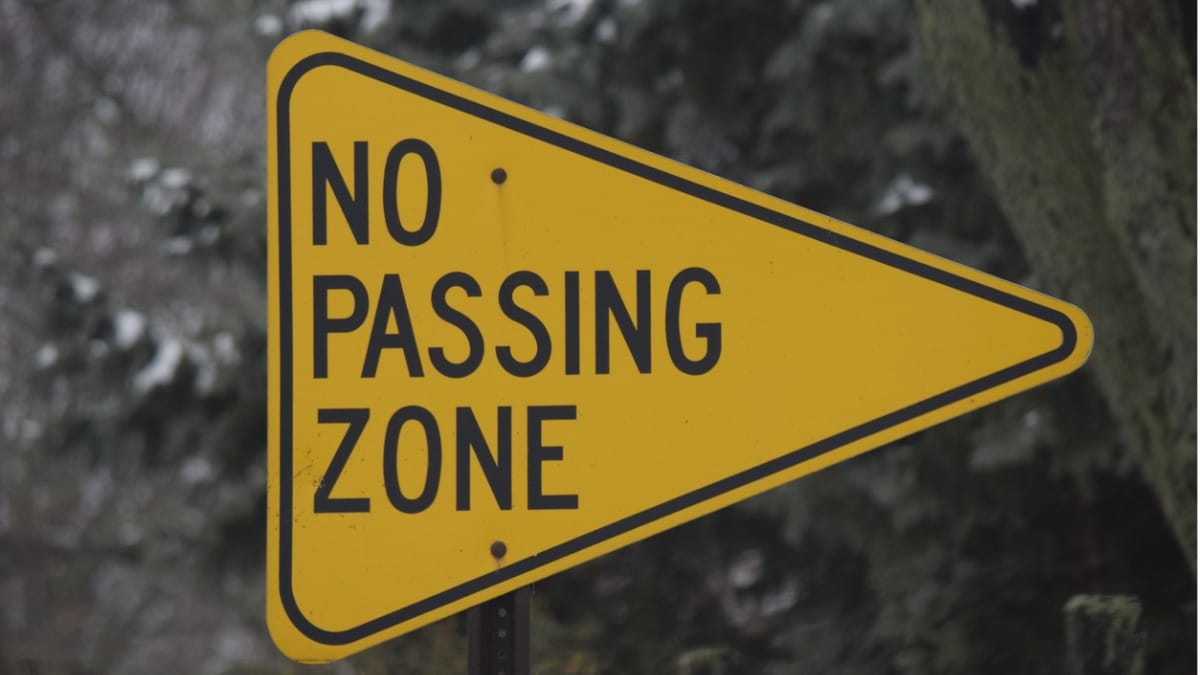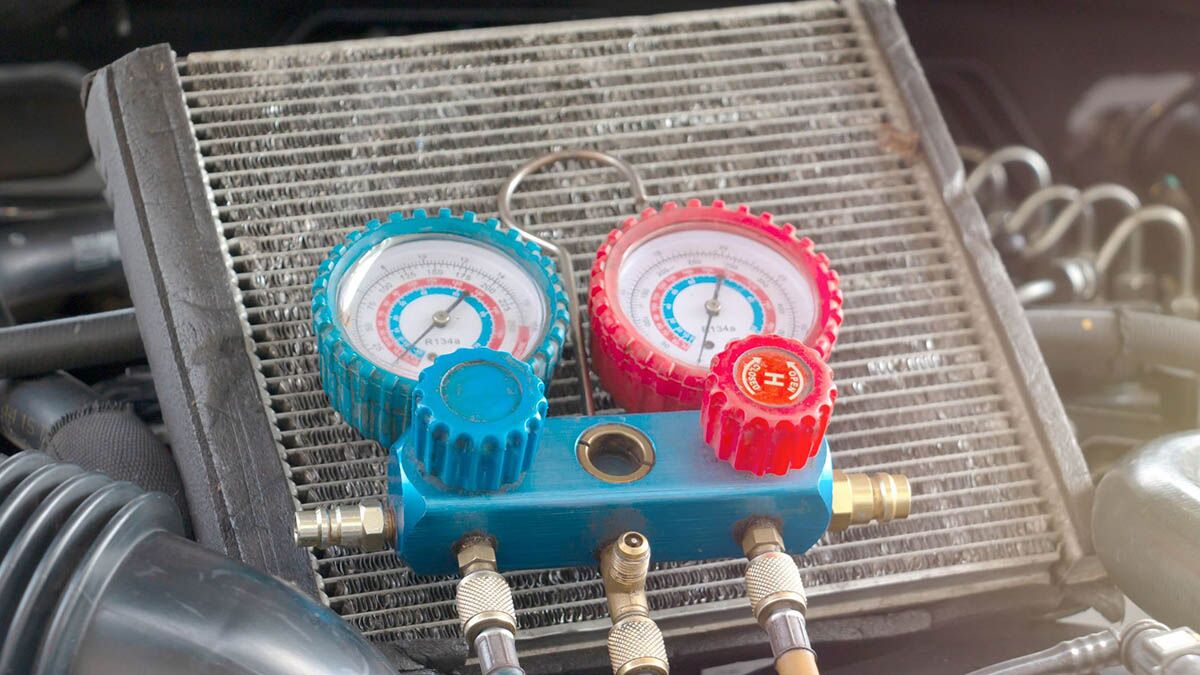Understanding road signs is critical to safe driving, and the “No Passing” sign is vital in maintaining traffic flow and preventing accidents. Many new drivers or those buying their first new or used vehicle may need to know what action to take. Keep reading for detailed information about what the signs warning you of a “no passing zone” or commanding “do not pass” mean.
What Does a ‘No Passing Zone’ Sign Mean?
“No Passing” signs tell motorists they cannot pass or overtake the vehicle in front of them. Drivers often face this restriction in areas where it’s unsafe to pass because visibility of oncoming traffic is limited, such as on curves or hills.
MORE: Best Cars for Teens: The List Every Parent Needs
What ‘No Passing’ Signs Look Like
Local, county, state, and federal transportation authorities may install signs along roadways and highways to keep motorists in their lane for safe travel. Here are some common varieties.
- DOT Warning Sign — The U.S. DOT warning sign for a “No Passing Zone” features uppercase black letters on a yellow pennant-shaped isosceles triangle pointing to the left. The sign in construction zones might be orange. This design is universally recognized and indicates that passing maneuvers are prohibited.
- Regulatory Sign — Drivers may encounter a vertical rectangle sign, similar to a speed limit sign, with a white background and the words “Do Not Pass” in uppercase black letters.
- Temporary Traffic Control Signs — Road construction zones may display another variation of a “No Passing” sign. The upper portion of a horizontal rectangle indicates a lane closure on an orange background; the lower part has a white background and reads “Do Not Pass” in black letters.
Other Visible Indicators
In addition to “No Passing Zone” signs, other indicators on the road indicate that passing is prohibited.
Yellow lines on the center of the road separate traffic flowing in opposite directions.
- Drivers stay to the right of the yellow lines.
- A solid yellow line means passing is prohibited.
- A dashed yellow line indicates passing is allowed.
White lines delineate lanes on roads that travel in the same direction.
- Solid double white lines indicate that lane changes are prohibited.
- A solid single white line indicates that lane changes are discouraged.
- A dashed white line indicates that lane changes are allowed.
Actions to Take Upon Seeing a ‘Do Not Pass’ Sign
When you encounter a “No Passing” sign or road markings restricting lane changes, immediately check your position and speed. If you were considering overtaking the vehicle ahead, abandon this maneuver and maintain a safe following distance from the car in front of you. The sign is there for your and other motorists’ safety. Disregarding “No Passing Zone” signs can lead to dangerous situations.
RELATED: Car Safety Agency Makes Harder Tests; More Cars Ace Them
Why Is It Important to Obey ‘No Passing Zone’ Signs?
Obeying “No Passing” signs is crucial for several reasons.
- Safety — Authorities post these signs where passing is hazardous. Ignoring them increases the risk of head-on collisions.
- Legal Compliance — Passing in a no-passing zone can result in traffic citations and fines.
- Traffic Flow — Adhering to these signs helps maintain a smooth, predictable flow of traffic.
Penalties for Ignoring ‘No Passing’ Signs
Drivers must face the consequences associated with unsafe lane changes and improper passing violations. Penalties may include traffic citations, fines, points on their driving record, and increased insurance premiums.
Stay in Your Lane
Understanding and respecting the “No Passing Zone” sign is essential for safe driving. Following traffic rules helps enable smooth travel, but it also protects you and others on the road. Safe driving practices begin with recognizing and obeying road signs. When you see a “Do Not Pass” sign or a solid line on the road, it safely guides you to your destination. Drive responsibly and keep the roads safe for everyone. When in doubt, err on the side of caution and refrain from passing.
Read Related Articles:
- How Long Can You Drive on a Spare Tire?
- How to Change Wiper Blades
- Does AC in a Car Use Gas?
- Yield Sign: What Does It Mean?








